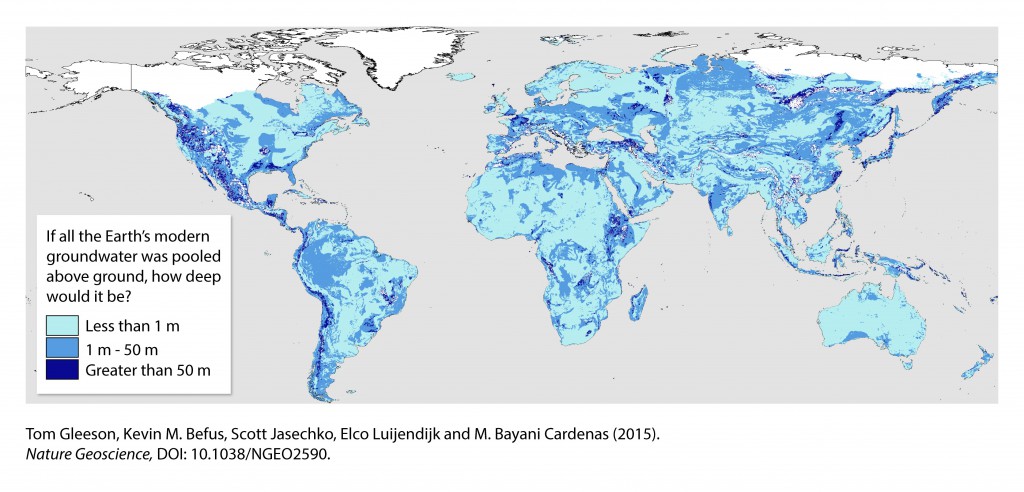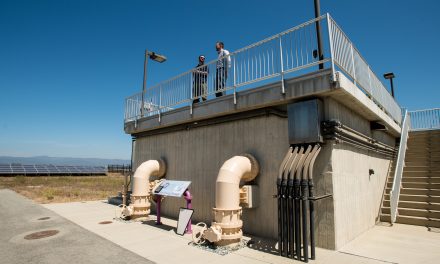
A map showing how deep all of Earth’s modern groundwater would be if pooled above ground. Image by Karyn Ho
An international group of hydrologists has produced the first data-driven estimate of the Earth’s total supply of groundwater. The report shows that less than 6% of groundwater in the upper 2 km (1.24 mi) of the Earth’s landmass is renewable within a human lifetime.
“We already know that water levels in lots of aquifers are dropping,” said lead author and assistant professor Tom Gleeson of the University of Victoria. “We’re using our groundwater resources too fast―faster than they’re being renewed.”
However, researchers now have a quantitative estimate of modern groundwater volume and distribution that they compared with geochemical observations.
The study by researchers at the universities of Victoria, Texas at Austin, Calgary, and Göttingen was published Nov. 16 in the journal Nature Geoscience.
Using multiple datasets ― with data from close to a million watersheds ― and more than 40,000 groundwater models, the study estimates a total volume of nearly 23 million m3 (6.1 billion gal) of total groundwater of which 0.35 million m3 (92.5 million gal) is younger than 50 years old.
The volume of modern groundwater dwarfs all other components of the active water cycle. Modern groundwater is a more renewable resource, but because it is closer to surface water and is faster-moving than old groundwater, it also is more vulnerable to climate change and contamination by human activities.
Old groundwater is found deeper and often is used as a water resource for agriculture and industry. Sometimes it contains arsenic or uranium and often is more salty than ocean water. In some areas, the briny water is so old, isolated, and stagnant it should be thought of as nonrenewable, Gleeson said.
The study’s maps show most modern groundwater is in tropical and mountain regions. Some of the largest deposits are in the Amazon Basin, the Congo, and Indonesia. North and Central America also have significant stores of modern groundwater running along the Rockies and the western cordillera to the tip of South America.
High northern latitudes are excluded because satellite data does not accurately cover these latitudes. Regardless, this area is largely under permafrost with little groundwater. The areas with the lowest volume of modern groundwater are not surprisingly in more arid regions, such as the Sahara.
“Since we now know how much groundwater is being depleted and how much there is, we will be able to estimate how long until we run out,” Gleeson said. To do this, he will be leading a further study using a global scale model.




